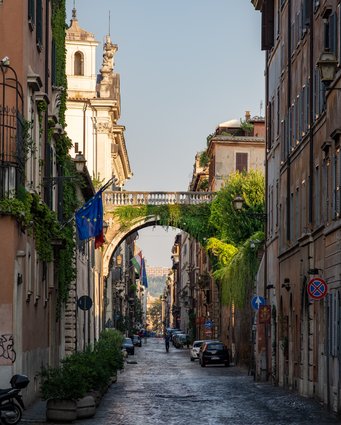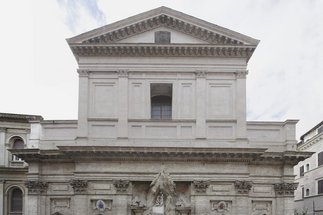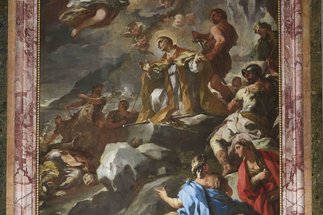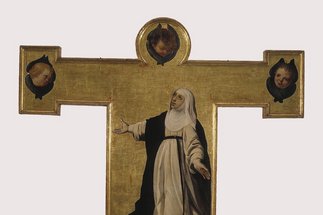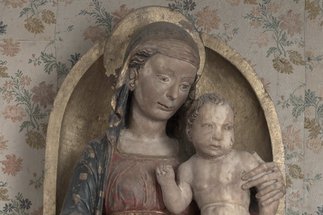
Inter-National Rome
Mapping Collective Identities in Via Giulia
Via Giulia, commissioned in 1508 by Pope Julius II and designed by Donato Bramante, was intended as an artery connecting the city’s most important governmental institutions. One of several functions of the new axis was to channel and manage the pilgrims who crowded the city, especially on the occasion of Holy Years. Because of this, Via Giulia and its neighborhood were occupied by the hospices, oratories, and churches of foreign communities, such as those built by the Florentine, Sienese, Neapolitan, Bolognese, Brescian, Aragonese, and English ‘nations’.

Starting from the groundbreaking book on Via Giulia by Salerno, Spezzaferro, and Tafuri (1973), this project will focus on the social and performative aspects resulting from the coexistence here of numerous foreign communities, and their impact on visual culture. The siting of foreign institutions within the specific topographical context of Via Giulia will be analyzed in relation to their appropriation of urban space for religious and charitable activities and the relative political implications. A thorough study of the networks of people involved in these institutions has the potential to unveil new insights about their administrative structure and their interaction with other institutions within and outside of Rome.
Participating projects
Publications
Lilla Mátyók Engel, Siena a Roma. Tradizioni, riti e cultura visiva della confraternita di Santa Caterina da Siena in Via Giulia (1519–1630), Rome, forthcoming (Roma communis patria 4).
Giuseppe Bonaccorso, "La chiesa dei Ss. Faustino e Giovita dei Bresciani a Roma. La storia dell’area del palazzo dei Tribunali tra contese e progetti: da Bramante a Carlo Fontana", RIHA Journal 0239, in Constructing Nationhood in Early Modern Rome, ed. by Susanne Kubersky-Piredda and Tobias Daniels, Special Issue RIHA Journal, 0237–0243 (2020).
Maurizia Cicconi, "E il papa cambiò strada. Giulio II e Roma. Un nuovo documento sulla fondazione di via Giulia", Römisches Jahrbuch der Bibliotheca Hertziana, 41 (2013/14) [2017], pp. 227–259.
